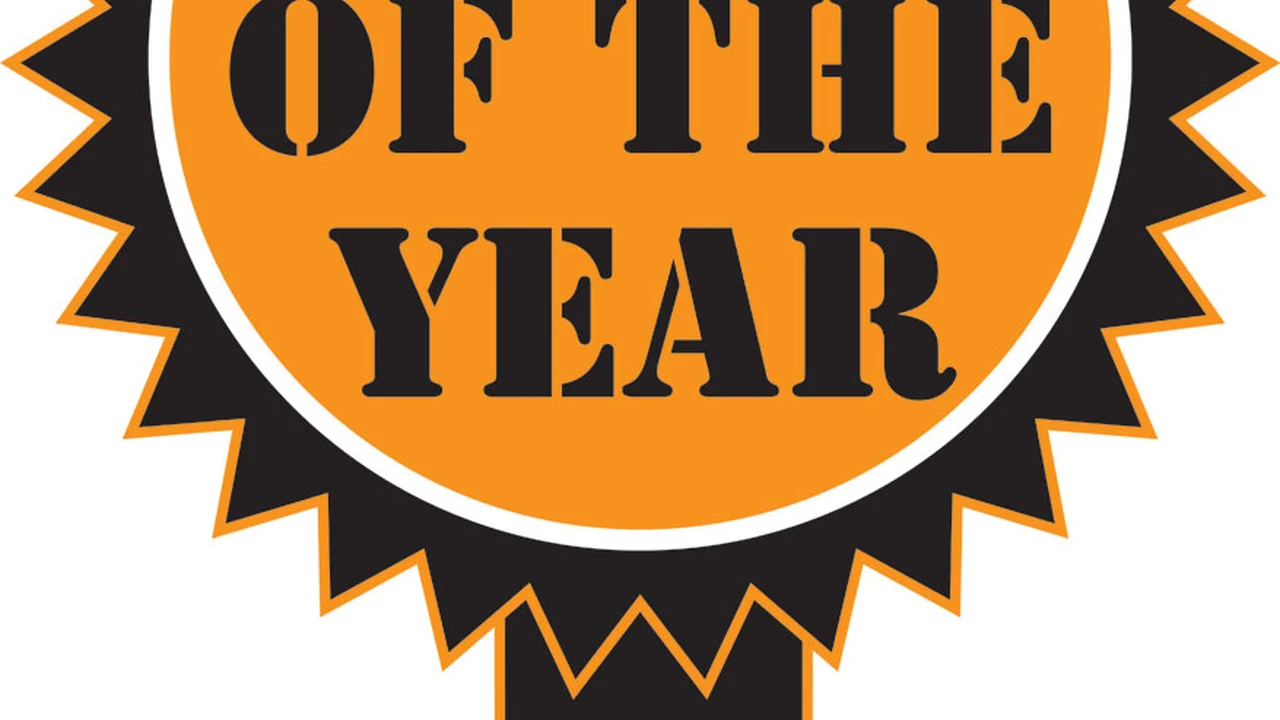5 Smart Ways to Boost Your Retirement Savings
Discover 5 clever strategies to significantly increase your retirement savings and reach your goals faster.

5 Smart Ways to Boost Your Retirement Savings
Understanding Your Retirement Savings Landscape
Hey there, future retiree! We all dream of a comfortable retirement, right? A time when you can kick back, relax, and not worry about the daily grind. But getting there often feels like climbing Mount Everest. The good news is, it's totally achievable, and you don't need to be a financial wizard to make it happen. This article is all about giving you five smart, actionable strategies to supercharge your retirement savings. We're talking about practical steps you can take right now, whether you're just starting out or you're already well on your way.
Before we dive into the nitty-gritty, let's quickly touch on why boosting your retirement savings is so crucial. Inflation, healthcare costs, and simply living longer mean that the money you save today needs to stretch further than ever before. Plus, the magic of compound interest works best when it has more money to compound on, and for a longer period. So, let's get those savings growing!
Strategy 1 Maximize Your Employer Sponsored Retirement Plans
This is often the easiest and most impactful way to boost your retirement savings, especially if your employer offers a match. Think of an employer match as free money – and who doesn't love free money? If your company offers a 401(k) or similar plan, and they match a percentage of your contributions, you absolutely, positively need to contribute at least enough to get the full match. It's an immediate, guaranteed return on your investment that you won't find anywhere else.
Understanding 401(k)s and Employer Matches
A 401(k) is a retirement savings plan sponsored by an employer. You contribute a portion of your paycheck before taxes are taken out, which lowers your taxable income now. Your investments grow tax-deferred until retirement, meaning you don't pay taxes on the gains until you withdraw the money. Many employers offer a matching contribution, for example, they might match 50% of your contributions up to 6% of your salary. This means if you contribute 6% of your salary, your employer adds another 3% for free! That's an instant 50% return on that portion of your savings.
Popular 401(k) Providers and Their Features
While you typically don't choose your 401(k) provider directly, it's good to know who the big players are and what they offer. Your employer will have chosen one for the company. Some of the most common providers include:
- Fidelity Investments: A giant in the retirement space, Fidelity offers a wide range of investment options within their 401(k) plans, from target-date funds to individual stocks and ETFs. They are known for their robust online platforms and customer service.
- Vanguard: Famous for its low-cost index funds and ETFs, Vanguard is a favorite among passive investors. If your 401(k) is with Vanguard, you'll likely have access to some of the lowest expense ratios in the industry, which means more of your money stays invested.
- Empower (formerly Empower Retirement): Another major player, Empower provides comprehensive retirement planning services and a user-friendly interface. They often offer financial wellness tools and educational resources to help participants make informed decisions.
- Principal Financial Group: Principal offers a variety of retirement solutions for businesses, including 401(k)s. They focus on providing personalized guidance and a broad selection of investment choices.
- T. Rowe Price: Known for its active management and strong performance in certain funds, T. Rowe Price is another common 401(k) provider. They offer a good mix of actively managed and passively managed funds.
Actionable Steps for Your 401(k)
First, find out what your employer's match policy is. Then, adjust your contribution percentage to at least meet that match. If you can, try to increase your contribution by 1% each year until you reach the maximum allowed by the IRS ($23,000 for 2024, or $30,500 if you're 50 or older). Even a small increase can make a huge difference over time due to compounding.
Strategy 2 Open and Maximize an Individual Retirement Account IRA
Even if you have a 401(k), an IRA (Individual Retirement Account) is a fantastic way to supplement your retirement savings. IRAs offer tax advantages and give you more control over your investment choices. There are two main types: Traditional IRAs and Roth IRAs, each with different tax benefits.
Traditional IRA vs Roth IRA
- Traditional IRA: Contributions are often tax-deductible in the year they are made, which can lower your current taxable income. Your investments grow tax-deferred, and you pay taxes when you withdraw money in retirement. This is generally better if you expect to be in a lower tax bracket in retirement than you are now.
- Roth IRA: Contributions are made with after-tax dollars, meaning you don't get an upfront tax deduction. However, your investments grow tax-free, and qualified withdrawals in retirement are also tax-free. This is usually better if you expect to be in a higher tax bracket in retirement than you are now, or if you want tax-free income in retirement.
Top IRA Providers and Their Offerings
Unlike 401(k)s, you get to choose your IRA provider. This means you can shop around for the best fees, investment options, and customer service. Here are some highly-rated options:
- Fidelity Investments: (Again!) Fidelity is a top choice for IRAs due to its extensive selection of investment products (stocks, ETFs, mutual funds, bonds), low fees (many commission-free ETFs), and excellent research tools. Their platform is user-friendly for both beginners and experienced investors.
- Vanguard: If you're a fan of low-cost index funds and ETFs, Vanguard is your go-to. They are known for their investor-owned structure, which means lower operating costs passed on to you. Their target-date retirement funds are particularly popular for hands-off investing.
- Charles Schwab: Schwab offers a comprehensive suite of investment products, commission-free online stock and ETF trades, and a strong focus on customer service. They also provide a wide array of research and educational resources.
- M1 Finance: For those who prefer automated investing with a bit more customization, M1 Finance is unique. You build a 'pie' of investments (stocks and ETFs), and M1 automatically invests new contributions according to your desired allocations. It's great for long-term, hands-off investing. Pricing: Free for basic accounts, M1 Plus for $125/year offers more features like lower borrowing rates.
- Betterment: A leading robo-advisor, Betterment manages your IRA portfolio for you based on your risk tolerance and goals. They use diversified ETFs and automatically rebalance your portfolio. This is perfect if you want a completely hands-off approach. Pricing: 0.25% annual advisory fee for balances under $100k, 0.40% for balances over $100k.
IRA Contribution Limits and Strategies
For 2024, the maximum you can contribute to an IRA is $7,000, or $8,000 if you're 50 or older. Even if you can't max it out, contribute what you can. Consider setting up automatic monthly contributions to make it a habit. If you're self-employed, look into a SEP IRA or Solo 401(k), which allow for much higher contribution limits.
Strategy 3 Automate Your Savings and Investments
One of the biggest hurdles to saving is simply remembering to do it, or finding the willpower to transfer money. Automation takes the decision-making out of the equation. Set it and forget it! This strategy leverages the power of consistency and removes the temptation to spend money that could be saved.
How Automation Works
You set up automatic transfers from your checking account to your retirement accounts (401(k), IRA, brokerage account) on a regular basis – usually weekly, bi-weekly, or monthly. This ensures that a portion of your income goes directly to savings before you even have a chance to spend it. It's like paying yourself first, but on autopilot.
Tools and Platforms for Automation
Most financial institutions make it incredibly easy to set up recurring transfers:
- Your Bank's Online Portal: Most banks allow you to set up recurring transfers to external accounts. You can schedule a transfer from your checking account to your IRA or brokerage account.
- Brokerage Platforms (Fidelity, Vanguard, Schwab, etc.): All major brokerage firms offer robust automation features. You can set up recurring investments into specific funds or ETFs within your IRA or taxable brokerage account.
- Robo-Advisors (Betterment, Wealthfront): These platforms are built around automation. Once you fund your account, they automatically invest your money according to your chosen portfolio and rebalance it as needed. They are excellent for hands-off, automated investing.
- Acorns: This app rounds up your everyday purchases to the nearest dollar and invests the spare change into a diversified portfolio. It's a great way to start saving small amounts without even noticing. Pricing: $3/month for Personal, $5/month for Personal Plus, $9/month for Premium.
- Digit: Digit analyzes your spending habits and automatically saves small amounts of money for you when it determines you can afford it, without impacting your daily budget. You can set savings goals, including retirement. Pricing: $5/month after a 30-day free trial.
Making Automation a Habit
Start small if you need to, but be consistent. Even $50 a month automatically transferred can add up significantly over decades. As your income increases, try to increase your automated savings amount. Treat these transfers like any other bill – non-negotiable.
Strategy 4 Invest in Low Cost Diversified Funds
Once your money is in your retirement accounts, where should it go? For most people, especially those new to investing, low-cost diversified funds are the way to go. These include index funds, Exchange Traded Funds (ETFs), and target-date funds. The key here is diversification (spreading your money across many different investments to reduce risk) and low costs (high fees eat into your returns over time).
Why Low Cost Matters
Fees might seem small, but they compound over decades. A 1% difference in annual fees can cost you hundreds of thousands of dollars over a 30-year investing horizon. That's why choosing funds with low expense ratios is critical.
Types of Low-Cost Diversified Funds
- Index Funds: These funds passively track a specific market index, like the S&P 500. They aim to replicate the performance of the index, not beat it. Because they are passively managed, their fees are very low.
- Exchange Traded Funds (ETFs): Similar to index funds, ETFs also track an index or a basket of assets. The main difference is that ETFs trade like stocks on an exchange throughout the day. They also typically have very low expense ratios.
- Target-Date Funds: These are all-in-one funds that automatically adjust their asset allocation (mix of stocks and bonds) over time, becoming more conservative as you approach your target retirement date. They are a great hands-off option for retirement savings.
Recommended Low-Cost Funds and Their Providers
Here are some examples of highly-regarded low-cost funds, often available through the providers mentioned earlier:
- Vanguard Total Stock Market Index Fund (VTSAX / VTI): This fund gives you exposure to the entire U.S. stock market, from large to small companies. It's incredibly diversified and has a very low expense ratio. Expense Ratio: VTSAX (mutual fund) 0.04%, VTI (ETF) 0.03%. Minimum Investment: VTSAX $3,000, VTI no minimum for shares.
- Fidelity ZERO Total Market Index Fund (FZROX): Fidelity offers a series of 'ZERO' index funds with literally 0% expense ratios. FZROX tracks the entire U.S. stock market. Expense Ratio: 0.00%. Minimum Investment: $0.
- Schwab Total Stock Market Index Fund (SWTSX): Schwab's equivalent to the total U.S. stock market index fund, also with a very low expense ratio. Expense Ratio: 0.03%. Minimum Investment: $1.
- Vanguard Total International Stock Index Fund (VTIAX / VXUS): For global diversification, this fund invests in stocks outside the U.S. It's crucial to include international exposure in your portfolio. Expense Ratio: VTIAX 0.11%, VXUS 0.07%. Minimum Investment: VTIAX $3,000, VXUS no minimum for shares.
- Vanguard Target Retirement Funds: These funds are named after a specific retirement year (e.g., Vanguard Target Retirement 2050 Fund). They hold a mix of stocks and bonds and automatically rebalance. They are a fantastic 'set it and forget it' option. Expense Ratios: Typically around 0.08% - 0.15% depending on the fund. Minimum Investment: $1,000.
Building Your Portfolio
For most people, a simple portfolio consisting of a total U.S. stock market index fund, a total international stock market index fund, and a total bond market index fund (or a target-date fund) will provide excellent diversification and long-term growth potential with minimal fees.
Strategy 5 Increase Your Income and Reduce Expenses
This might seem obvious, but it's often overlooked. The more money you have coming in, and the less you have going out, the more you can allocate to retirement savings. This strategy isn't just about cutting lattes; it's about optimizing your entire financial flow.
Boosting Your Income
- Negotiate a Raise: Don't be afraid to ask for what you're worth. Research industry standards for your role and prepare a strong case based on your contributions.
- Side Hustle: Start a side gig! Whether it's freelancing, driving for a ride-share service, selling crafts online, or tutoring, extra income can go directly into your retirement accounts.
- Invest in Yourself: Learn new skills that can lead to higher-paying jobs or promotions. Online courses, certifications, or even a part-time degree can have a huge ROI.
- Sell Unused Items: Declutter your home and sell items you no longer need on platforms like eBay, Facebook Marketplace, or local consignment shops.
Reducing Your Expenses
This isn't about deprivation, but about mindful spending. Track your expenses for a month to see where your money is actually going. You might be surprised!
- Budgeting Apps: Use apps like You Need A Budget (YNAB) or Mint to track your spending and create a budget. YNAB is particularly powerful for giving every dollar a job. YNAB Pricing: $14.99/month or $99/year after a 34-day free trial. Mint Pricing: Free.
- Cut Unnecessary Subscriptions: Review all your monthly subscriptions (streaming services, gym memberships you don't use, apps) and cancel those you don't truly value.
- Cook at Home More: Eating out is a huge expense for many. Meal prepping and cooking at home can save hundreds of dollars a month.
- Shop Smarter: Look for sales, use coupons, buy generic brands, and avoid impulse purchases.
- Refinance Debt: If you have high-interest debt (like credit card debt), look into consolidating or refinancing to a lower interest rate. This frees up cash flow.
- Review Insurance Policies: Shop around for better rates on car, home, and health insurance. You might be overpaying.
The Snowball Effect
When you increase your income and decrease your expenses, you create a 'savings surplus.' Direct this surplus straight into your retirement accounts. This is where you can really accelerate your progress and reach your retirement goals much faster than you thought possible.
Putting It All Together for Your Retirement Future
Boosting your retirement savings isn't about one magic trick; it's about consistently applying smart strategies. Maximize your employer's match, open and fund an IRA, automate your contributions, invest in low-cost diversified funds, and continuously look for ways to increase your income and reduce expenses. Each of these steps, when combined, creates a powerful force that will propel you towards a financially secure and comfortable retirement. Start today, even with small steps, and watch your future self thank you!
:max_bytes(150000):strip_icc()/277019-baked-pork-chops-with-cream-of-mushroom-soup-DDMFS-beauty-4x3-BG-7505-5762b731cf30447d9cbbbbbf387beafa.jpg)






